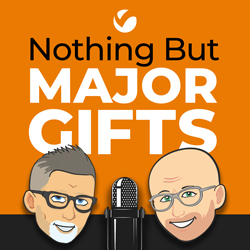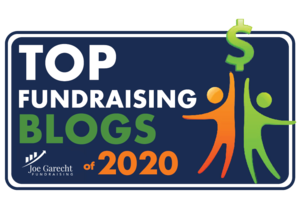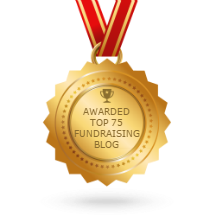
In this series of seven posts, you will learn the indispensable categories of work that we at Veritus believe are required for any major gift program to be successful. (You can read all of these together in our free White Paper.) In my last entry, I talked about the necessary and strategic place of planned giving in any good major gift program. Now we need to address another source of major gifts: corporations and foundations.
Pillar #6: Treating Corporations and Foundations Just Like Individuals
“Corporations, businesses and foundations are an entirely different animal,” the Development Director said with solid conviction and no room for discussion. There was no way we were going to convince him of a different point of view. We tried to make the point that corporations, businesses, foundations and other organizations (places of worship, other NGOs, service organizations, etc.) were really no different than an individual major donor, but he would not hear it.
So here is the case for our point of view: why the ideal major gift team must make a concerted effort to treat these important segments of the upper end of your active donor file, namely corporations and foundations, just like individuals.
Many major gift people look at organizations (my catch-all word for corporations, businesses, foundations and other orgs) as these mysterious, impenetrable, impersonal structures that are very difficult to talk to and deal with. We at Veritus have always looked at them as people, pure and simple. Just people. Think about it. An organization is nothing more than a group of individuals. It has a personality, a set of values and a way of doing things – just like a person. We tend to focus on the grantmaking rules of an organization, rather than on the fact that behind those rules and processes are a group of individuals who actually have blood running through their veins, feelings in their hearts and thoughts and values in their heads, just like every one of the major donor individuals on your caseload. Let’s look at this more closely:
- A corporation has a set of values, other than just profit, that drive its need to give some of its money away. There is a growing trend among progressive businesses to be more socially responsible. Leaders are realizing that there is a connection between their charitable interests and activities and their reputation and profit. Bottom-line: a set of values drives charitable giving – just like an individual!
- A foundation was founded by either an individual or a business to fund a set of interests and passions – just like an individual.
- An organization, whether it’s a place of worship, a social club, another non-profit, etc., was organized to pursue a set of interests and values – just like an individual.
- A set of organizations should be on a caseload and managed by an MGO using the same metrics, moves management approaches, performance reporting, etc. as the MGO managing a caseload of individuals.
As we’ve said all along, an effective major gift program starts with the MGO identifying, then serving the interests and passions of an individual. It is no different with an organization! The ONLY thing that is different is the process of securing the funds. Everything else is the same – including reporting requirements. On this point of reporting requirements, it is so interesting that non-profit fundraisers will agree they need to report back to organizational funders with discipline, accuracy and timeliness – but those same people will not set up reporting-back systems for individual donors. And then they wonder why thousands of donors go away and millions of dollars are lost each year!
So the key thing with an organization is to find out what those interests and passions are, and then figure out how to serve them. (Note that there may be a different set of interests and passions for different divisions, departments or offices of the organization.)
Here are the steps you can take to develop or improve this area of your major gift program:
- Make sure that organizational fundraisers are part of the major gift team. They should not be isolated from the individual MGOs or managed by a different department. They should be an integral part of the major gift team.
- Get rid of the notion that you have to get stuffy and intellectual in how you talk to organization representatives. It is true that they will require more process, proof of outcomes, budgets, stats and other numbers and facts. But don’t get away from the core fact that you, through your organization, are changing lives and/or the environment, and that that is the most important thing the two of you can be doing together. This also means that your communication, in addition to the business and process content requirement, should have emotional content as well. You need to find that common ground of shared values, passions and interests, and then talk about those shared interests and values using stories to make your point.
- Find and connect to the decision-maker in the organization. This may require matching up your CEO or program head with that person.
- Discover the match between your program objectives and the organization’s interests and values. You really can’t move forward without this critical information. The key question to answer is this: What objective is the organization trying to achieve through their charitable giving?
- Prepare a proposal that shows how their interests and values match your program objectives, and be sure to meet the proposal, documentation and due diligence requirements they have.
- Be sure to include how lives or the environment will be changed as a result of their giving, and how their objectives will be met.
While fundraising from organizations can be complex, the process really boils down to these simple points. Follow them, together with the requirements of the funding organization, and you will be successful IF you can successfully show the match of values and the achievement of their objectives. Remember, there are plenty of funds to be had from this important source. One of our clients raises over $10 million a year through the efforts of two MGOs dealing with a relatively short list of organizations! These folks have figured out the code we’ve outlined here.
You can secure funds from organizations. Make a commitment to manage and relate to all the organizations on your file the same way you have organized yourself to deal with your individual major donors. And don’t forget that an organization has a heart and face. Look for it!
Richard
You can read all of our Seven Keys together in one document by requesting our free White Paper – click here.
Series details:
- Key #1 – Attributes of the Ideal Major Gift Organization
- Key #2 – Make Sure You Have the Facts!
- Key #3 – Do You Have the Right Moves?
- Key #4 – Develop Offers that Donors Want
- Key #5 – Turning Planned Giving into Strategic Giving
- Key #6 – Treating Corporations and Foundations Just Like Individuals
- Key #7 – What You Get Done Matters!






0 Comments